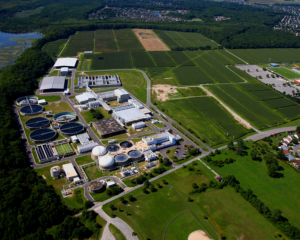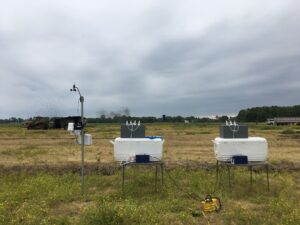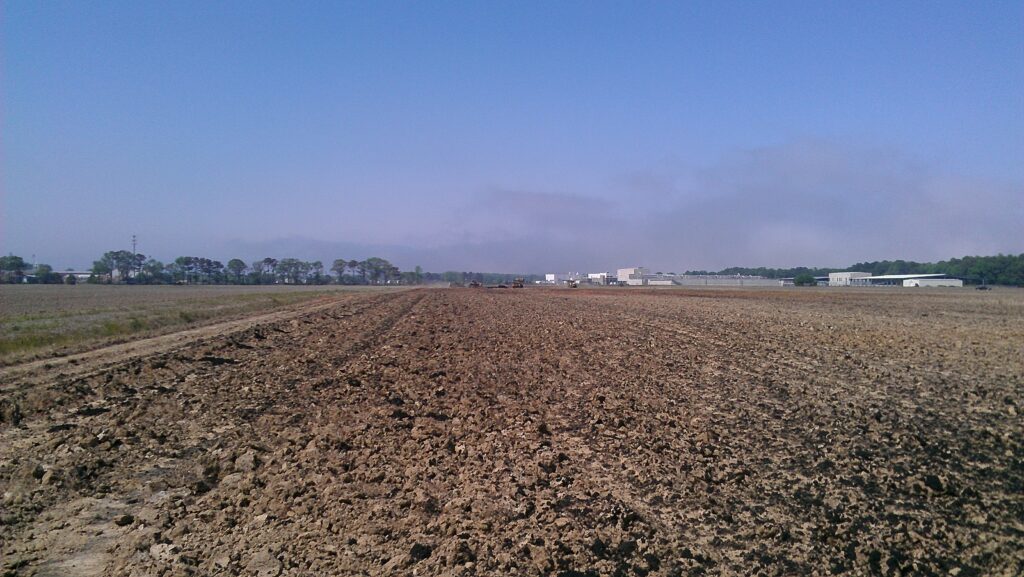Protecting public health and the waters of Hampton Roads by treating wastewater effectively is the mission of HRSD, created in 1940 by referendum to restore local waters, beaches for recreation and shellfish grounds for harvesting and consumption. Jamie Heisig-Mitchell, Chief of Technical Services, and Chris Wilson, Chief of Process Engineering and Research, said recently, however, that the work of the people of HRSD goes well beyond the treatment of wastewater. HRSD is focused on a sustainable future, ensuring not only that the coming generations will inherit clean waterways but that as a result of long term investments in technology and strategies, including the productive and profitable use of biosolids by-products that they produce, future generations will be able to achieve long term, affordable solutions to be able to maintain these waterways, beaches and harvesting grounds.
“HRSD goes beyond effective wastewater treatment, taking a 360 approach to all initiatives,” commented Chris Wilson, PhD, P.E. “A key shift in our thinking allows us to optimize our wastewater treatment efficiency and co-manage our technology and research programs in which we partner with universities to make our treatment processes the most effective, productive, and efficient. The question we ask for today’s consumers (of which we are) and of the future: are we ensuring our decisions have resulted in the best dollars spent; reflected our value statement; and gone beyond simply meeting treatment objectives required in the permit to meet our vision of future restoration.”
First – the story of the Crystal Green® product is one example of dollars well spent. HRSD’s drive for a sustainable solution to address an operational challenge resulted in a collaboration with Ostara. The result was a continuous release fertilizer made from struvite, a crystalline material that can benefit plant life but in doing so creates problems at wastewater treatment plants when it builds up in pipes. HRSD protects its infrastructure, reduces the costs of on-going maintenance, and creates a sustainable source of slow-release phosphorus, a limited global commodity.
 “Overall, producing biosolids for agriculture use meets our objectives for managing our wastewater treatment and ensuring that the residuals that are generated during this treatment are produced in an environmentally sustainable manner.” Jamie Heisig-Mitchell, who also serves as President of the Virginia Biosolids Council, continued, “the use of biosolids in agriculture builds soil health, benefits plants, and provides an opportunity for carbon sequestration. This aligns well with our long-range view of sustainability and our commitment to our communities. HRSD is continually looking for new opportunities to reduce the costs of treatment while providing community and environmental benefit.”
“Overall, producing biosolids for agriculture use meets our objectives for managing our wastewater treatment and ensuring that the residuals that are generated during this treatment are produced in an environmentally sustainable manner.” Jamie Heisig-Mitchell, who also serves as President of the Virginia Biosolids Council, continued, “the use of biosolids in agriculture builds soil health, benefits plants, and provides an opportunity for carbon sequestration. This aligns well with our long-range view of sustainability and our commitment to our communities. HRSD is continually looking for new opportunities to reduce the costs of treatment while providing community and environmental benefit.”
Moreover, thermal hydrolysis pre-treatment is a relatively new process to the U.S. but established worldwide. The HRSD Atlantic Plant embraced this technology, where raw solids are treated at high temperature and pressure prior to the anaerobic digestion process. The value of this treatment is that produced biosolids have been shown to be drier, possess lower odors, and conform with requirements for exceptional quality biosolids. The residual biosolids product is a valued, environmentally friendly fertilizer that can be used for agricultural and residential purposes – markets which have been established and demonstrated. Anaerobic digestion of thermally hydrolyzed solids can also be accomplished in less than half of the tank volume of conventional anaerobic digestion. The additional capacity generated at the Atlantic Plant creates flexibility for strategic solids management planning across HRSD’s nine urban treatment plants. 
Finally, HRSD is home to an extensive research farm, founded nearly 40 years go. It is approximately 200 acres and is farmed with a corn – wheat – soybean rotation. In the early days, it supported development of Class B product, to ensure the value of the product for the agricultural community and to address research questions such as documenting the benefit of land application for small grains. Research currently underway on the Progress Farm includes understanding the fate and transport of per and polyfluorinated compounds in land application as part of a collaboration with Purdue University.
